Motorcycles in Jakarta
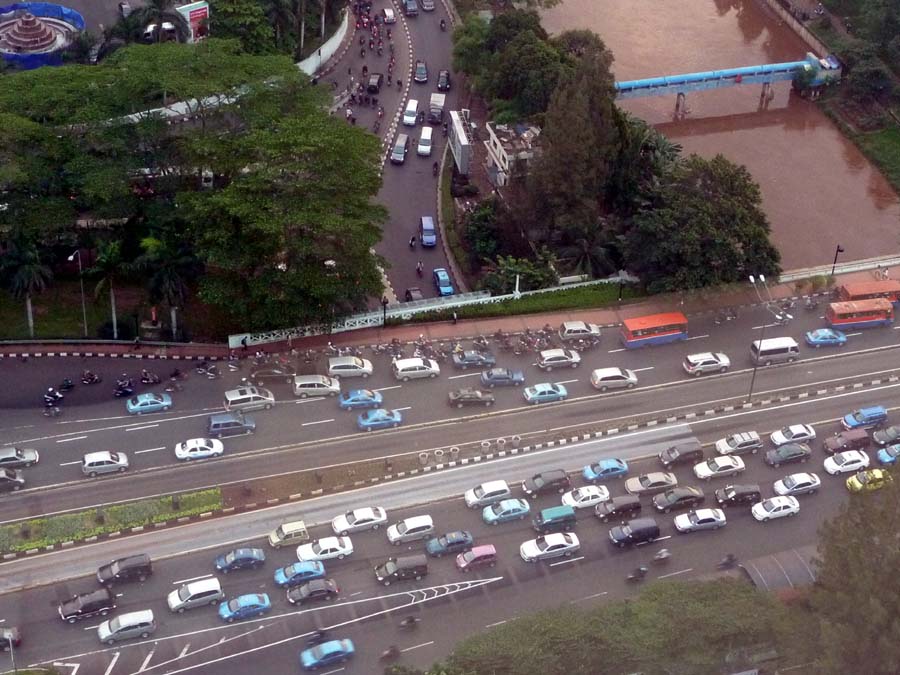
|
|
I heard about the massive traffic problems in Jakarta long before my visit which set the worst of my expectations so anything could be better from here. More so my visit could give me the opportunity to validate the exact situation. |
|
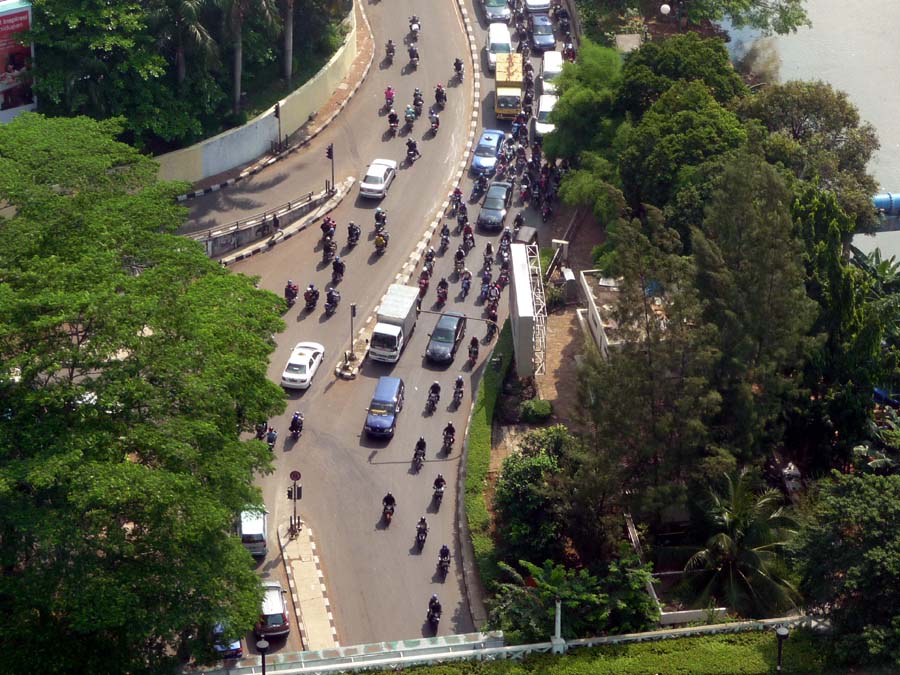
|
|
Well, it took almost two hours for my airport limo to reach my hotel in downtown Jakarta 20 miles away. The good news was that the limo charged a flat fee so I didn't have to worry about the ever ticking meter in a traffic jam. The bad news was that I actually grew hungry and was hoping the limo driver could serve dinner on board. Dreamed on :-). |
|
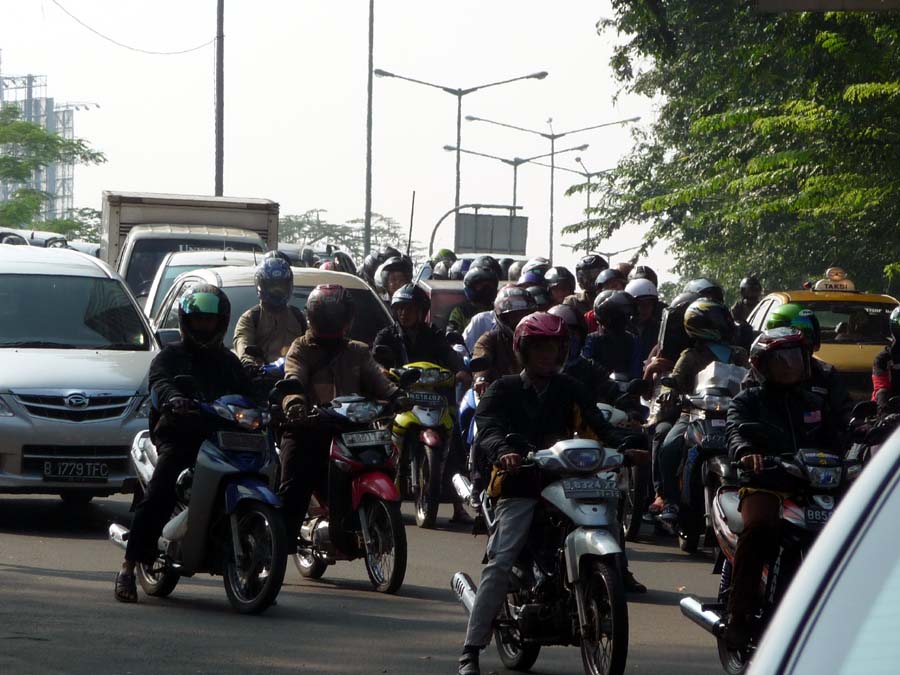
|
|
Reality set in the next morning when I took a taxi to go to the office to familiarize with the surrounding just 1/10 mile away. It was a good decision because I had to walk through a tunnel under the freeway in my suit and tie with a laptop computer. I would have to cross in front of 70+ motorcyclists wearing smoked glass helmets, revving their engines and waiting impatiently for the traffic light to change and for me to walk faster. |
|
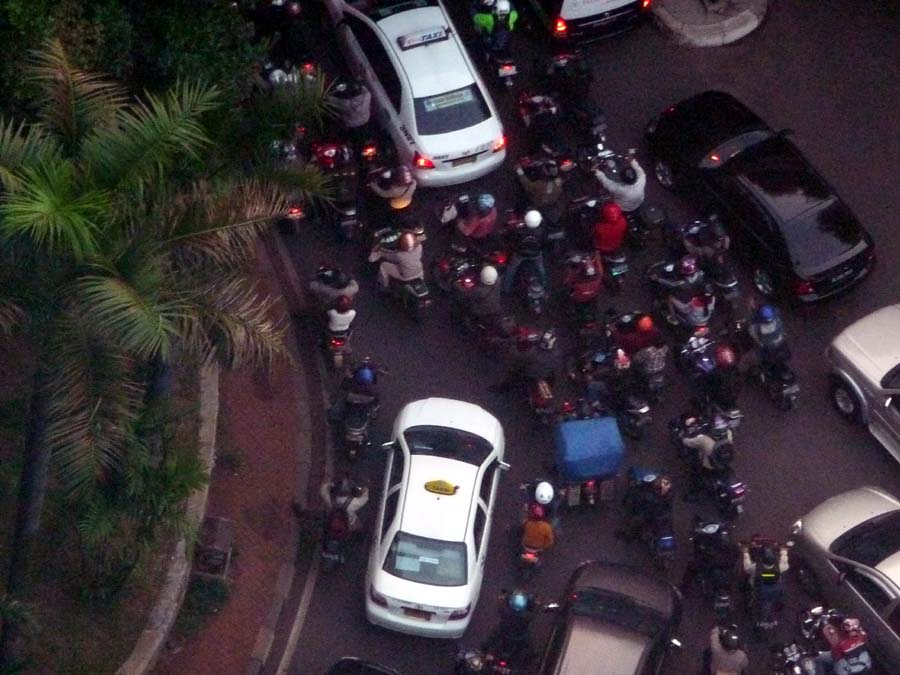
|
|
This was the same junction looking down from the safety of my office. |
|
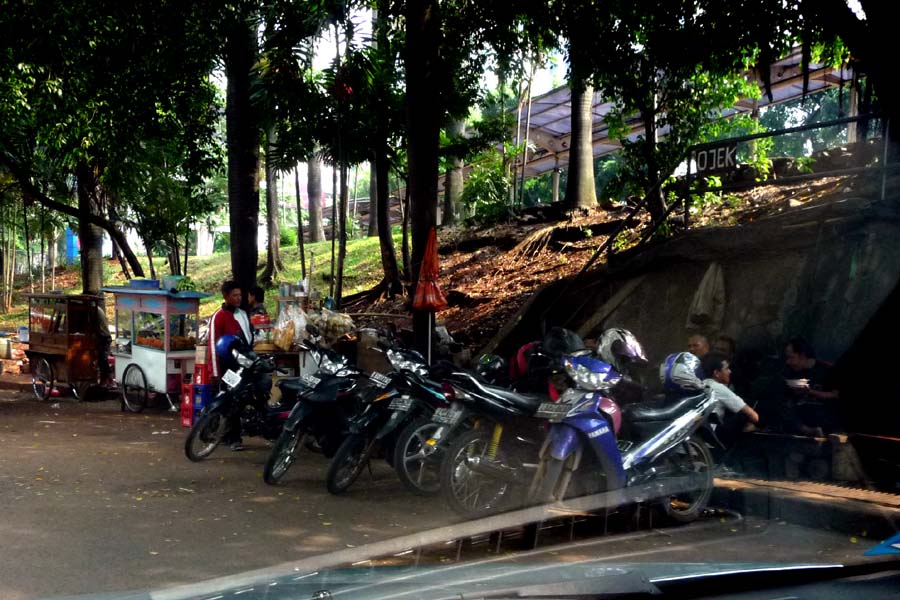
|
|
Here were the Ojek, motorcycle taxis which replaced the old fashion human powered 'rickshaws' in Jakarta. They could be found almost in every major street corners and in most rural area. I was watching a young lady in office attire deciding which Ojek she wanted to ride with. After negotiation she hopped on to the back of an Ojek driven by a total stranger who earlier was sleeping under the trees. Well .. it was not that much different than me riding with a uniformed limo driver from the airport, wasn't it?!! |
|
|
|
Then there was the bajaj, a three-wheeler motorcycle imported from India. It was the next upsized taxi carrying two or more passengers, depending on how skinny you were. :-) There were an estimated 20,000 bajaj in the streets of Jakarta. |
|
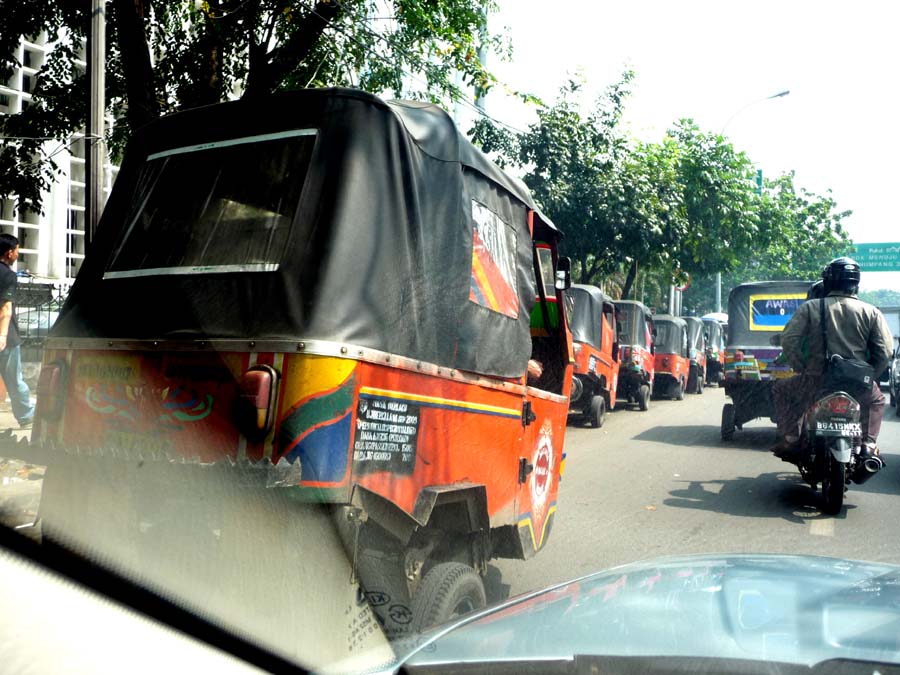
|
|
Here was a taxi stand, or bajaj stand in Jakarta. |
|
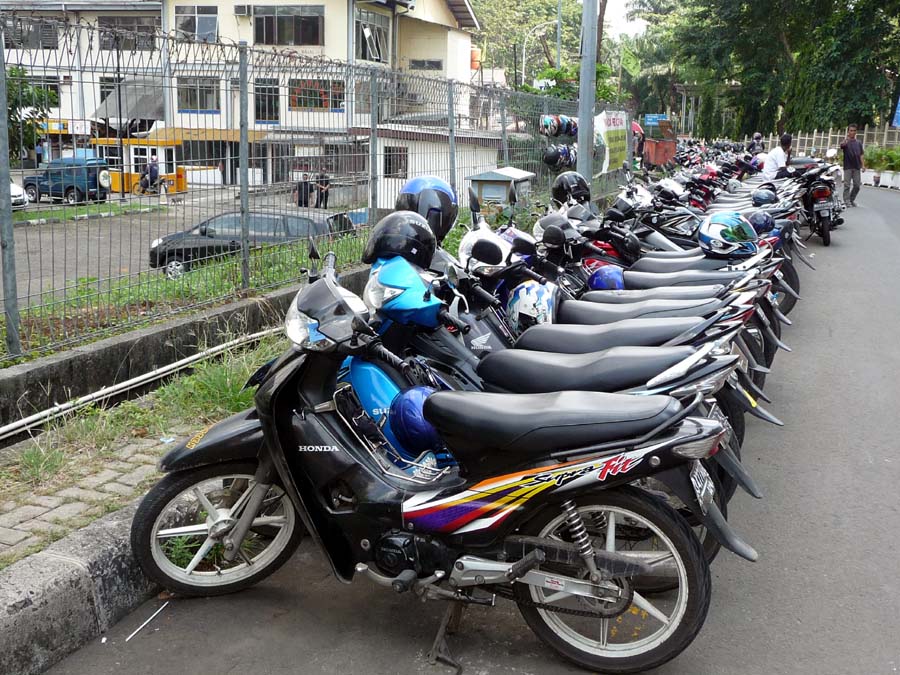
|
|
Motorcycles were gaining popularity in Indonesia by the day and were in much demand ahead of other consumer products like the iPhones, Blueberries or Netbook Computers. In a staff party organized by the hotel where I was staying, the top three prizes given away were motorcycles. |
|
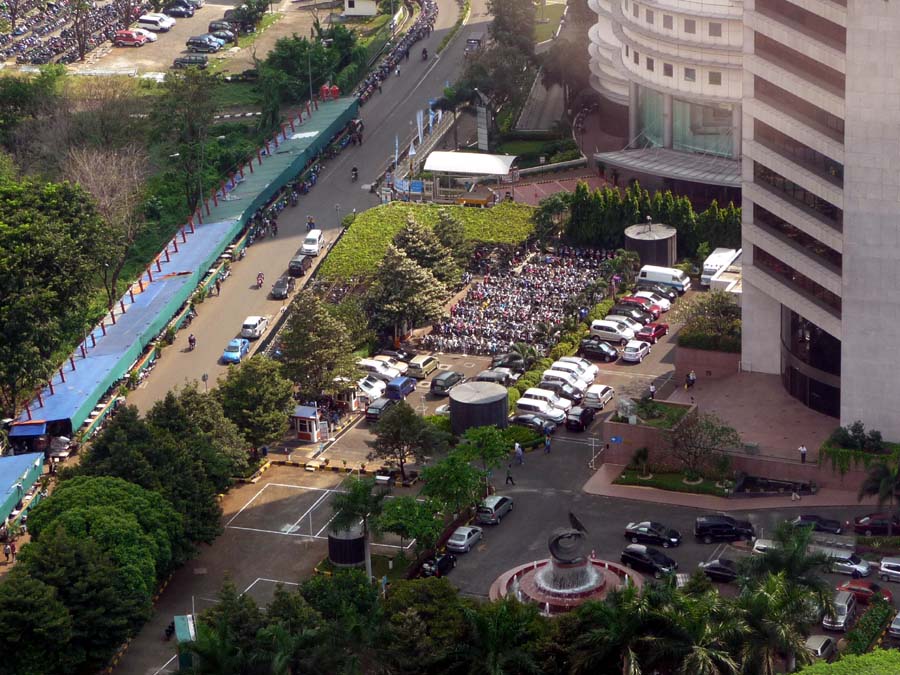
|
|
To keep up with social demands, major employers in the Jakarta area had set aside designated parking areas for the motorcycles. Looking at this photo, one could visualize how many of them were on the road during the commute hours. |
|
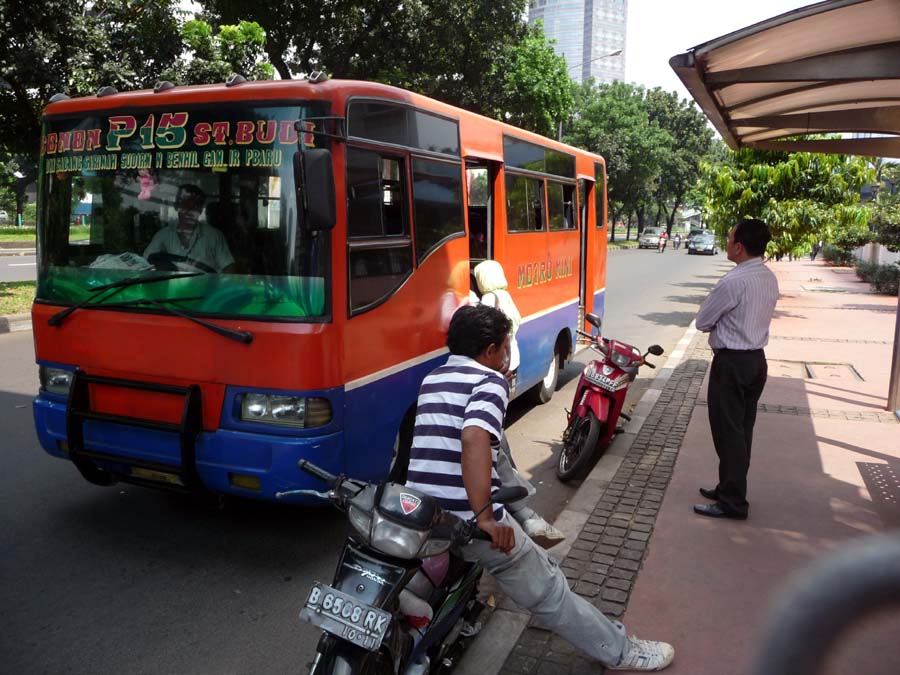
|
|
To make the matter worse, the cost of a motorcycle had come down to the level that it was cheaper to ride a motorcycle than to take public transportation like a bus. |
|
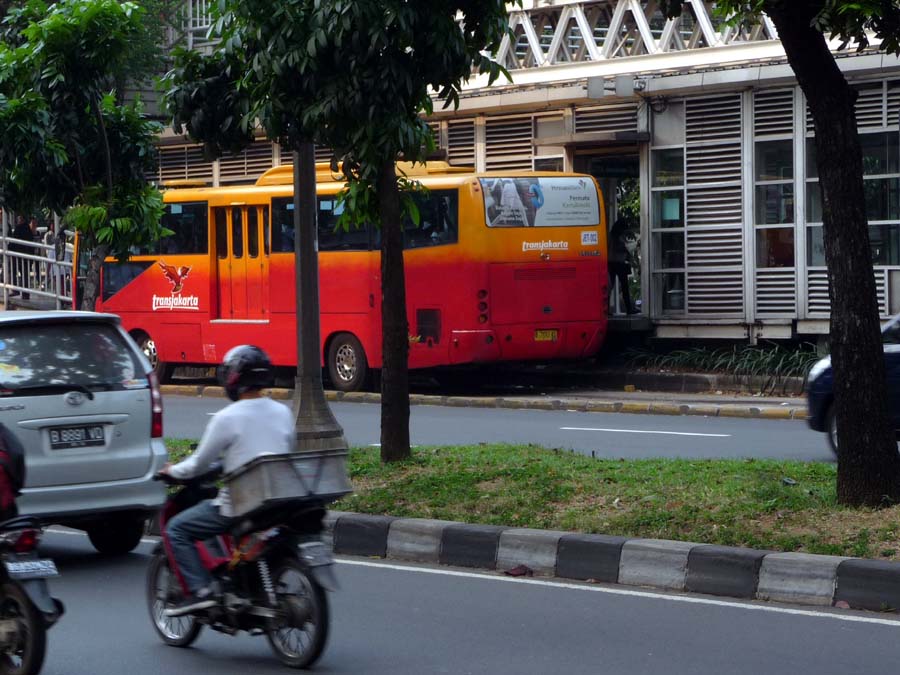
|
|
Here was a privatized bus line serving metro Jakarta. Note the design of the door to the bus was about 3 feet above ground so entering to and exiting from the bus had to be done at the stations and not en route. |
|
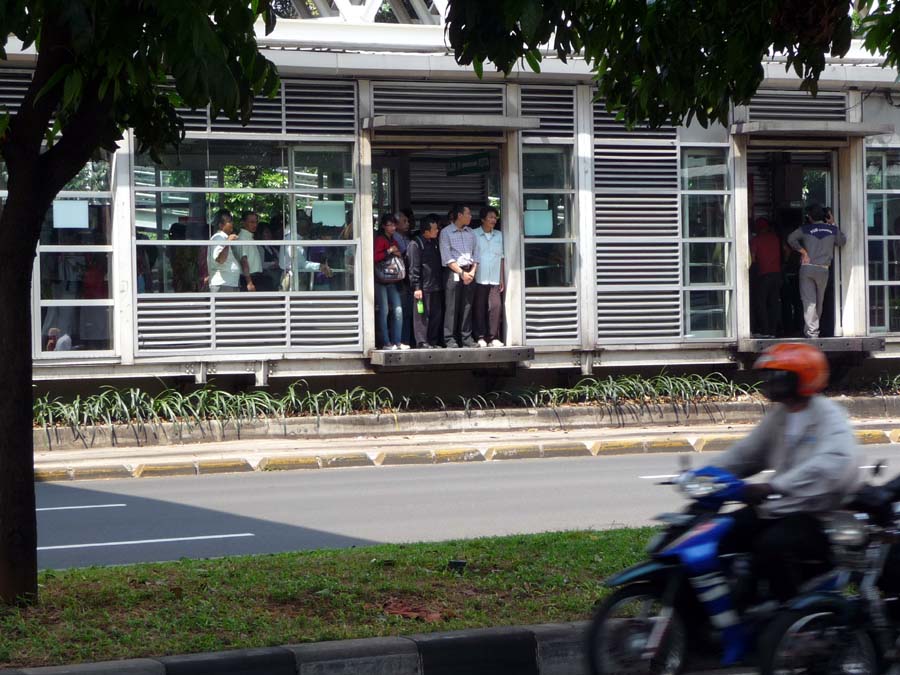
|
|
The bus stop was generally located in the center median lane of the road connected to both sides of the street by elevated pedestrian walkways. |
|
|
|
There were commuter trains connecting Jakarta to outskirt communities. At peak hours about 400,000 commuters crammed in or onto carriages to travel into and out of Jakarta. The trains were almost always full. Because of that, young men and women would cling on to the steps or ride on the roof of the train to go places, to avoid paying fare or simply to get a thrill. They walked or jumped from one car to the next while the train was in motion. Accidents happened daily, most commonly due to low hanging cables or wires from above the tracks. Sadly to say, little was done and accidents continued to happen to riders just to avoid paying the 25 U.S. cents train fare. |
|
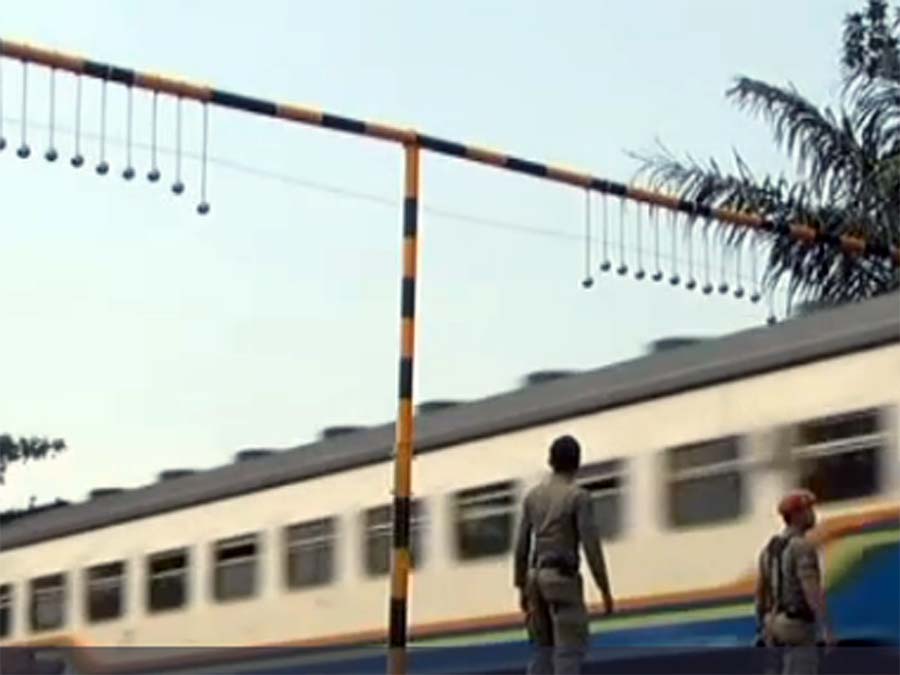
|
|
Things didn't get any better so the train authorities decided drastic measures to erect poles over the railroad tracks and hang grapefruit size concrete balls on chains to deter roof riders. |
|
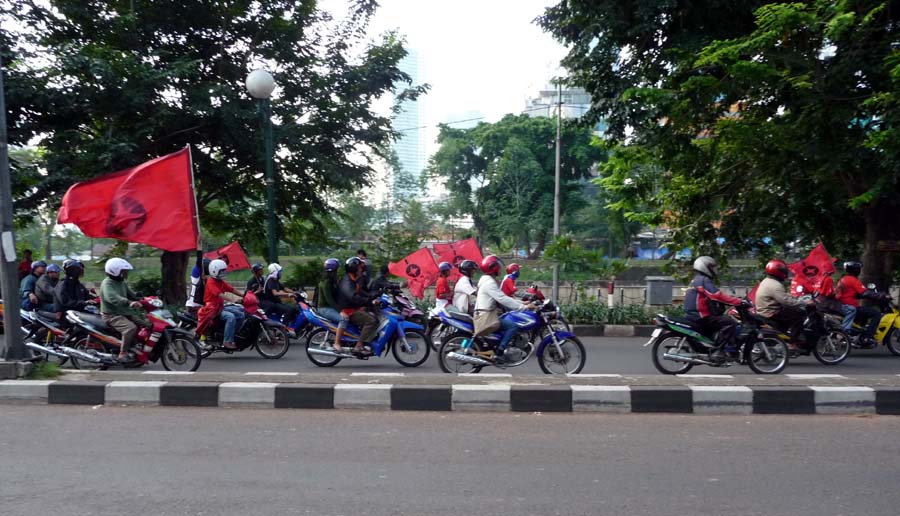
|
|
Last but not least, my camera caught a group of citizens
campaigning on the motorcycles for a political cause.
|
|